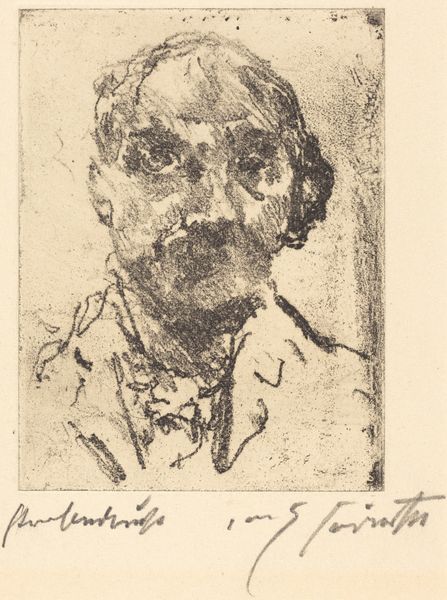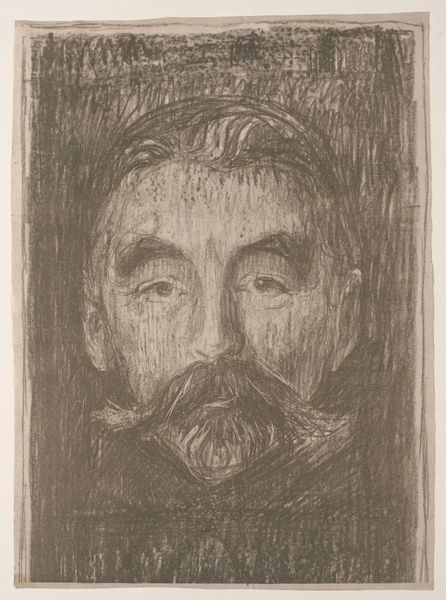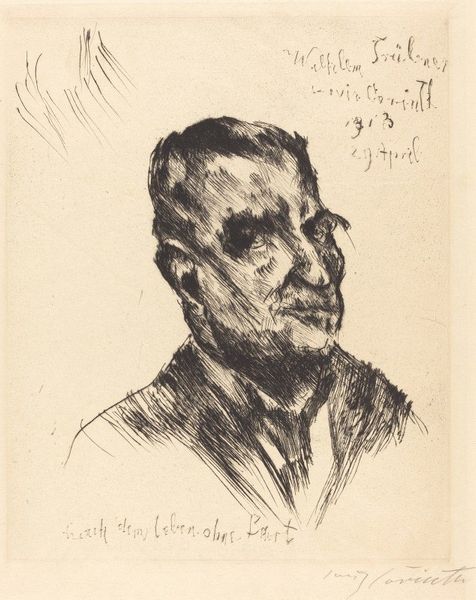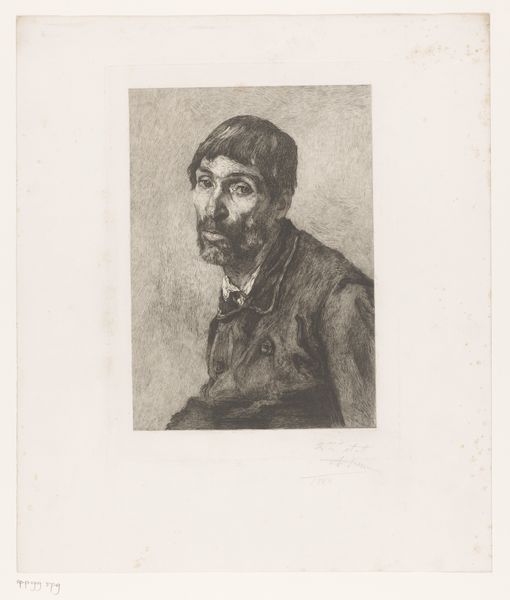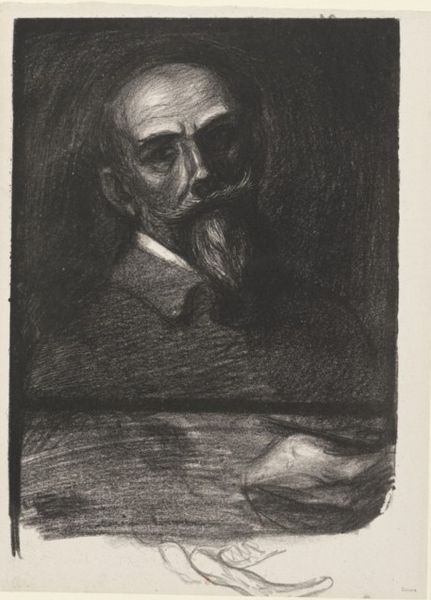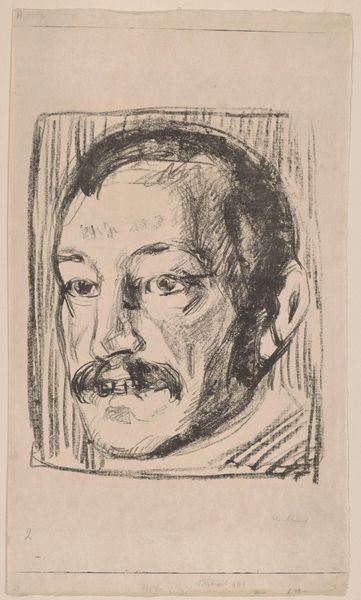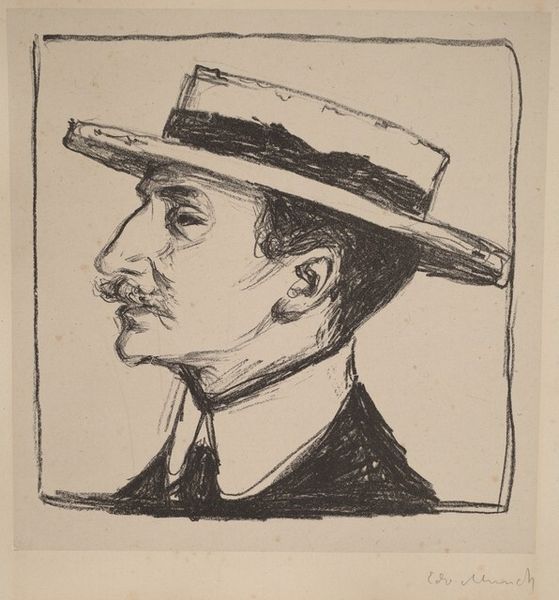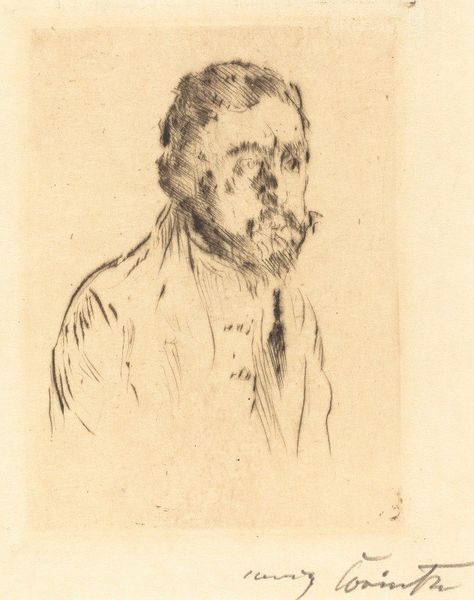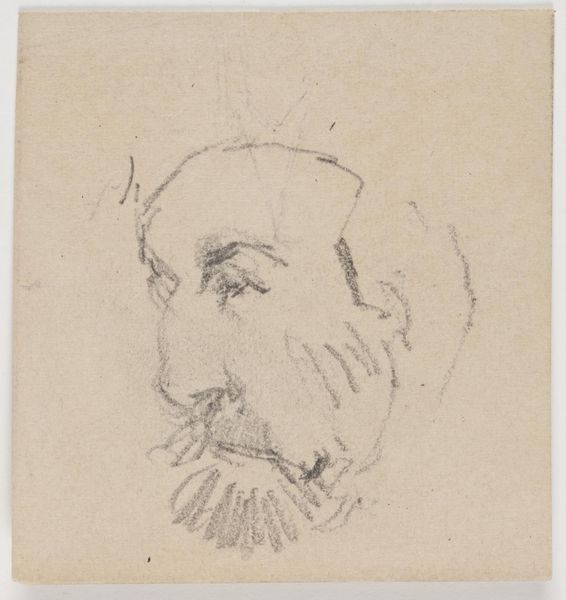
print, etching
#
portrait
# print
#
etching
#
expressionism
Dimensions: plate: 7 1/16 x 5 1/2 in. (18 x 14 cm) sheet: 44.6 x 31.4 cm (17 9/16 x 12 3/8 in.)
Copyright: National Gallery of Art: CC0 1.0
Curator: Edvard Munch's etching, "Sigbjorn Obstfelder," created in 1897, offers us a striking portrait of the Norwegian writer. The work exemplifies expressionism, rendering Obstfelder with visible agitation. Editor: There’s a raw intensity to it. The sketchy lines, especially around the eyes and mouth, make the subject look haunted, almost tormented. It feels like peering into someone's inner turmoil. Curator: Exactly, the swirling, almost frantic, etched lines enhance the sense of emotional distress that characterizes Munch's broader body of work. As fellow members of the Kristiania Bohème, Munch and Obstfelder moved in similar circles and both reckoned with a world increasingly in flux as the avant-garde confronted entrenched societal norms. Considering Obstfelder's writings, one can trace existential and spiritual anxieties in both men. Editor: Right, and if you look closely at the etching process itself—the delicate lines bitten into the metal plate, the way the ink clings—it's almost like the medium mirrors that inner turmoil. It's physical; you can almost feel the pressure applied in making the print, mirroring the weight Obstfelder seemed to carry. The relatively bare background even puts emphasis on the face as if it were the central subject. Curator: Yes, situating this work within Munch's artistic and intellectual world helps us to contextualize the deep personal connection he shared with Obstfelder, as their similar mindsets caused Munch to convey more about the state of the subject rather than strictly reproducing his appearance. Obstfelder lived a short life, marked by nomadic wanderings, episodes of mental instability, and a strong sensitivity to social exclusion. This adds another layer to our interpretation. Editor: Looking at it this way, the labor behind this etching isn’t just technical skill but a form of empathic labor, a kind of visual response to the writer's condition, his relationship to societal alienation. This speaks to the broader use of prints as a democratizing medium, rendering this shared experience and trauma in multiples. Curator: Considering his role within the avant-garde milieu, it becomes clearer why Munch chose to represent him in such a visceral manner. This is a striking instance where biographical interpretation enhances our viewing experience. Editor: Ultimately, seeing it as a constructed object—made with deliberate actions, material choices—reveals another dimension of meaning beyond just representing the subject's likeness or his existential angst. It makes one contemplate the act of portrayal. Curator: Agreed. This portrait invites us to engage in art historical, biographical, and theoretical debates concerning subjectivity, alienation, and the politics of artistic representation. Editor: This makes me see how form and content are inextricably linked. Thanks to understanding these insights, I look at this artwork and think about what I feel a lot more deeply.
Comments
No comments
Be the first to comment and join the conversation on the ultimate creative platform.
